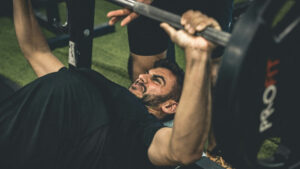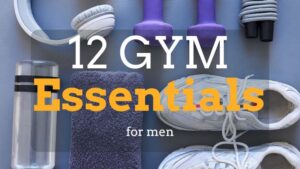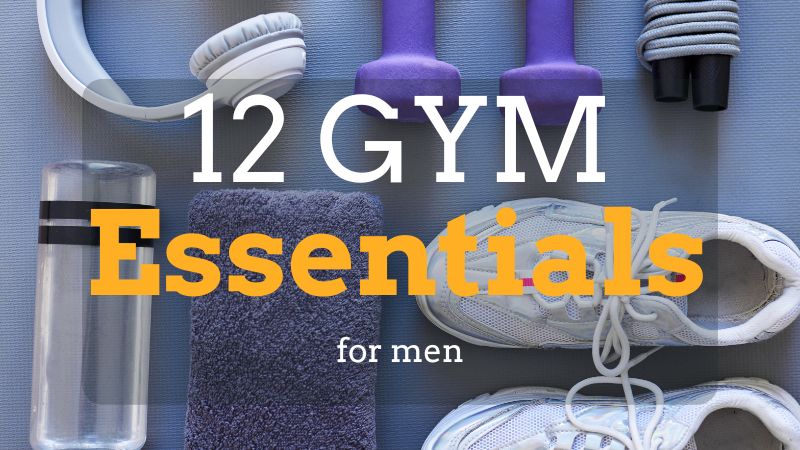
Gym Essentials For Women:A Complete List
Enthusiasts who never miss a session, understanding the gym essentials for women is crucial, not just for what to wear but also for what to

Each year, I eagerly await using my water bottle when running as spring turns to summer. It’s finally warm enough to bring out the shorts and tank tops buried in my running drawer! There’s nothing like a sunny trail run on a warm day to rejuvenate my spirit.
Yet, the rise in temperature signals another change: the need to carry water while running! Without knowing the location of every water fountain in your area, any run exceeding a few miles necessitates some form of portable hydration.
This article is perfect for those wondering how to comfortably and efficiently carry water during runs. Running gear companies have tackled this issue head-on, evolving significantly from the olden days of lugging syrup bottles by the handle. (Admittedly, I’m too young to recall those times myself, but the tales are quite telling!)
Price range: affordable
Water capacity: small to medium
Comfort level: high to moderate
Ease of finding the right fit: straightforward
Compatibility with smartphones: sometimes
For short to medium runs, I prefer a hand-held water bottle. It eliminates the need to adjust the fit of a pack or belt, and it’s liberating to run without something tied around your waist or shoulders. These bottles are also convenient for quick refills at aid stations during races.
An added advantage is their cost-effectiveness as a hydration solution during runs. You could simply carry a regular water bottle in your hand, reminiscent of old-school methods, for an even cheaper option. However, modern running-specific bottles often feature a hand strap, allowing you to relax your grip without the risk of dropping the bottle.
Hand-held running bottles typically range from about 10oz to 24oz. Carrying one in each hand doubles your hydration capacity. They’re usually designed to allow easy drinking by squeezing the bottle near your mouth, though be cautious not to accidentally spray yourself. Some models include a pocket sizable enough for a smartphone, or at least for some keys and a gel.
There are some downsides: larger bottles may tire your arms on longer runs, running with a bottle in one hand can affect your form (tip: alternate hands often), and holding two bottles means you can’t use your hands for eating or adjusting your gear.
Below are two of my favorite hand-held running bottles.
For runs lasting 1-2 hours, the 17 oz CamelBak Quick Grip Chill is my top choice. Its twist-open squirt nozzle is user-friendly, and the insulation helps keep the water cool for an extended period. The pocket comfortably accommodates most smartphones, and I appreciate the detachable strap feature, making it versatile for other activities like cycling.
One minor drawback: my older version has a 21 oz bottle which feels a bit hefty, especially for smaller runners. This might be slightly cumbersome (or, on a positive note, a chance to strengthen those biceps in your run!).
For runs up to an hour, I always reach for the Nathan SpeedShot Plus. This 14 oz bottle features light insulation and is designed for effortless holding, requiring minimal grip. Its pocket is spacious enough for numerous smartphone models.
Being a smaller runner myself, I find the SpeedShot’s reduced size and weight far more comfortable compared to the larger CamelBak mentioned earlier. For those seeking a bit more volume, the SpeedDraw Plus is a great alternative, offering 18 oz capacity.
Price range: affordable
Water capacity: small to medium
Comfort level: high to moderate
Ease of finding the right fit: straightforward
Smartphone compatibility: infrequent
Hand-held soft flasks offer an innovative twist on traditional bottles, with their main body crafted from a flexible material. This design enhances comfort during the hold, allows for easy storage in a pocket or backpack when emptied, and smartly prevents the annoying sloshing sound of a half-empty rigid bottle.
While they may lack effective insulation, leading to quicker water warming, this is a common issue even with insulated hard bottles over time. Apart from this, soft flask hand-helds share similar advantages and disadvantages as their hard bottle counterparts.
Below, I’ve listed my top picks for soft flask hand-helds.
The CamelBak Nano Quick Stow Flask, a 17oz soft flask, features a compact pocket suitable for keys or a credit card. Its unique criss-cross hand strap is crafted for secure handling, adaptable for both left and right-handed users. While some find it slightly awkward and floppy to hold, others don’t seem to be bothered by this aspect.
The Nathan ExoShot Handheld Flask stands out with positive reviews compared to many similar products. This 12 oz flask is ideal for shorter runs due to its smaller size, which also contributes to its ease of handling. An innovative feature, the ‘integrated spine’, appears to effectively address the common issue of floppiness found in other soft flasks.
Price range: moderate
Water capacity: medium
Comfort: varies from moderate to low, based on fit
Difficulty in finding the right fit: somewhat challenging
Smartphone compatibility: generally yes
Hydration belts are a time-honored choice among long-distance runners and continue to be in vogue. They typically come in two styles: a single bottle positioned diagonally across the lower back, or two side holsters for smaller, flask-shaped bottles.
The appeal of these waist packs lies in keeping your hands free and avoiding the sweaty back that often accompanies a hydration vest or backpack. Plus, they usually feature additional pockets for a phone and more snacks than what you can fit in hand-held bottle pockets.
The significant downside, however, is the tendency to bounce. While some runners find them indispensable, I’ve yet to discover a hydration belt that stays put without shifting from hips to waist and then bouncing uncomfortably. The effectiveness likely varies based on body shape; I suspect (though am open to correction) that waist packs might be more favored by men than women.
Price-wise, they sit in the middle between hand-held bottles and most vests or backpacks, making them a viable option for those seeking a hands-free hydration solution during runs.
Below are two popular hydration belt models.
The Nathan Peak Waist Pack is designed to carry a single 18 oz bottle, along with sufficiently sized pockets for a phone, snacks, and keys. It offers a broad size adjustability, making it suitable even for petite runners. For hotter days, to keep your water cooler for longer, you can switch to an insulated SpeedDraw bottle.
The Nathan Trail Mix Plus is a hydration belt tailored for runners, featuring two 10oz bottles (20oz total) flanking a large central pocket. A notable benefit of this dual-bottle setup is the ability to carry an electrolyte drink in one and plain water in the other, offering versatile hydration options.
Price range: mid to high
Water capacity: medium to large
Comfort: varies from moderate to low, depending on fit
Difficulty in finding the right fit: somewhat challenging
Smartphone compatibility: generally yes
For runs extending beyond a couple of hours, the capacity of hand-held bottles and waist packs may prove insufficient. In these cases, especially for longer, hotter, or more remote runs, I opt for a hydration pack or vest. These vary from minimalistic, body-hugging vests that primarily carry water to comprehensive backpacks designed for extended mountain treks. Finding the perfect fit can require some experimentation, but a well-fitting hydration pack can be a game-changer.
A well-designed, correctly fitted running pack can offer substantial comfort, minimizing bounce and chafing. However, finding that perfect fit can be a challenge, and hydration packs tend to be on the pricier side. It’s advisable to try them on in-store or purchase one with a return option. An ill-fitting pack can significantly hinder a good run. They might also be a bit tricky to refill quickly during races at aid stations.
Bonus running tip: Minor chafing issues can often be resolved with BodyGlide or similar products. If you’re new to this, welcome to the world of long-distance running. 🙂
Most hydration packs are equipped with a compartment for a hydration bladder, typically ranging from 1.5 to 2 liters. Many also incorporate additional capacity with front-mounted holders for bottles, usually the soft kind in modern designs.
Hydration packs often have distinct women’s and men’s versions, with differences extending beyond color schemes. Female-specific designs and sizing can be crucial for women seeking a comfortable and body-friendly fit.
In terms of convenience, packs are unmatched. They generally feature a variety of pockets and compartments for essentials like phones and snacks. The pack’s capacity itself can vary from minimal to over 10 liters, transforming them into compact day packs for carrying warm layers, sunscreen, trail maps, and more. Some even include loops for trekking poles.
When selecting a hydration pack, it’s important to distinguish between water capacity and gear capacity. Water capacity is typically indicated by the size of the containers it can hold, like a 1.5-liter bladder or two 500ml bottles.
Gear or storage capacity is described as in hiking packs – for instance, “a 10-liter pack” or “5 liters of storage capacity” – which doesn’t imply the pack can carry 5 or 10 liters of water but rather for other items like snacks, a jacket, headlamp, etc.
With the rising popularity of hydration packs, there’s a wide array of options available. The high-end models can cost upwards of $150, but there are many budget-friendly choices as well. Here’s a look at some highly recommended models from reputable brands.
The Nathan QuickStart is a popular and budget-friendly option, ideal for those new to running with hydration packs. It accommodates a 1.5-liter hydration bladder and an optional 22 oz flask, offering impressive stability with minimal bounce. The inclusion of a zippered front pocket for phones is a thoughtful addition. Its 4-liter gear capacity is sufficient for snacks and a light layer, making it a practical choice for most runners.
The Ultra Vesta for women and Ultra Vest for men are part of Ultimate Direction’s trail running pack series, positioned as the second smallest. They offer space for a 1.5 – 2-liter reservoir in the back and two 500ml bottles in the front, along with 10.8 liters for gear. Additional features include trekking pole loops and a safety whistle. For more capacity, the Mountain Vest(a) and Adventure Vest(a) are worth considering, while the Race Vest(a) caters to those preferring a more minimalist design.
Known for its snug fit and high-quality materials, the Salomon Advanced Skin 5 accommodates a 1.5-liter hydration bladder and two 500ml front soft flasks. With a 5-liter gear capacity, it’s suitable for carrying extra layers and snacks. For longer or more remote runs requiring more space, the Skin 12 is a better option.
Osprey, a renowned hiking pack manufacturer, enters the running pack market with the Dyna (women) and Duro (men) 1.5 hydration vest. This sleek, affordable vest holds 1.5 liters of water and a few essentials. The 6-liter version is available for those needing more space.
Bladder Recommendation: For hydration packs without an included bladder, the Platypus 2 Liter Big Zip is an excellent choice. It’s known for its durability, ease of use, and quick filling capability.
While the standard methods for carrying water during a run – bottles, belts, and backpacks – are widely adopted for their effectiveness, the world of running gear is always evolving with innovative ideas. Some smaller gear companies are constantly striving to introduce novel hydration solutions. If you’re in search of something uniquely different, here are a couple of less conventional options to consider:
With various ways to carry water on your runs, here are some essential hydration tips for runners.
If you’re running for less than 30-45 minutes in moderate weather, you might not need water. However, for longer runs or in hot conditions, carrying at least a small handheld bottle is advisable. In hot climates, consider bringing water even for short runs.
Your water intake depends on individual factors like sweat rate and weather conditions. A simple rule is to drink when you’re thirsty. Typically, this might mean consuming around 5-10 oz every 15 minutes in moderate temperatures, with increased intake in hotter conditions.
Sweat loss isn’t just water but also crucial electrolytes like sodium and potassium. For runs exceeding an hour in hot weather, replenish electrolytes with sports drinks, electrolyte tablets, salt pills, or salty snacks.
Initial signs include thirst and fatigue. Progressing symptoms can be headaches, muscle cramps, or nausea. Dark urine post-run is a clear indicator of insufficient hydration. Even with proper hydration, slight dehydration after a warm run is normal; ensure rehydrate post-run.
Yes, overhydration or hyponatremia is a risk, though more common in endurance athletes in extreme conditions. To avoid this, drink according to thirst and balance water intake with electrolyte replenishment. Symptoms of overhydration are similar to dehydration but can include nausea, excessive tiredness, headaches, and puffiness in hands and fingers.
Finding the right water bottle when running is essential for maintaining hydration and enhancing your running experience.
Whether you opt for a hand-held bottle, a waist pack, or a more extensive hydration vest, the key is to choose a solution that fits your specific needs and comfort. Remember, staying hydrated is crucial for your health and performance, especially as your runs become longer and the temperature rises.
By considering the options and tips discussed, you can ensure you’re well-prepared and hydrated for every run.
FAQ: Can I use any regular water bottle for running, or do I need a specialized one?
While you can use a regular water bottle, specialized running bottles often come with features like hand straps for easy carrying, are designed to fit more comfortably in your hand, and sometimes include pockets for small items. These features can significantly enhance your running experience.
FAQ: How do I clean and maintain my hydration pack or flask to ensure hygiene?
Regular cleaning is essential. For flasks and bottles, use warm soapy water and a brush. For hydration bladders, use specific cleaning tablets or a mixture of baking soda and water. Make sure to dry them completely after washing to prevent mold growth.
FAQ: Is it necessary to carry water for a marathon or race, given there are aid stations?
It depends on personal preference and the frequency of aid stations. Carrying your own water allows you to hydrate on demand and can be helpful in warmer conditions or if you prefer specific hydration drinks.
FAQ: Are there any alternatives to water for hydration during longer runs?
Yes, sports drinks that contain electrolytes and carbohydrates can be beneficial for longer runs as they help replenish lost salts and provide energy. Some runners also prefer electrolyte tablets or mixes.
FAQ: How do I choose between a hydration belt and a vest?
Consider the length and intensity of your run, personal comfort, and how much you need to carry. Belts are great for shorter runs or those who prefer less bulk, while vests offer more storage and hydration capacity for longer runs.


Enthusiasts who never miss a session, understanding the gym essentials for women is crucial, not just for what to wear but also for what to

A common myth circulating in the fitness world is the belief that a gym diet plan is unnecessary. Many seem convinced that they can simply

The average bench press, often referred to humorously in gyms as ‘How much ya bench’ or ‘whaddaya bench?’, stands as a quintessential measure of strength

Nowadays, we always seem to be packing a bag for something. Whether it’s getting ready for work with your messenger bag or briefcase, filling up

Enthusiasts who never miss a session, understanding the gym essentials for women is crucial, not just for what to wear but also for what to

A common myth circulating in the fitness world is the belief that a gym diet plan is unnecessary. Many seem convinced that they can simply

The average bench press, often referred to humorously in gyms as ‘How much ya bench’ or ‘whaddaya bench?’, stands as a quintessential measure of strength

Nowadays, we always seem to be packing a bag for something. Whether it’s getting ready for work with your messenger bag or briefcase, filling up
Copyright © 2024 remindsmartbottles. All Rights Reserved.
Copy the coupon code below and fill it in when you purchase to enjoy!
newuser